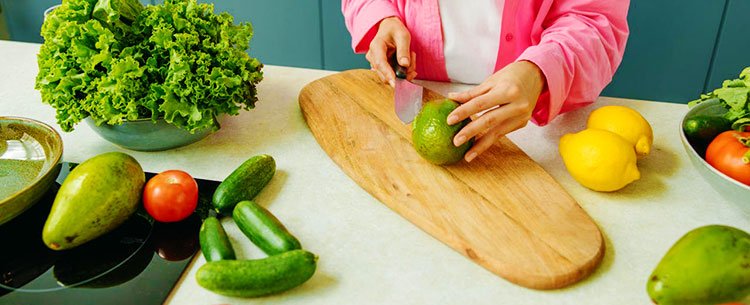Grow healthy, eat healthy, stay healthy!

If you say you have no time to take care of a kitchen garden, remember—it will take less time than you’ll spend in hospitals for treatment. If you say you don’t have the money to invest in a kitchen garden, remember—it will cost much less than medical bills.
“How Old Are You?”, a Malayalam movie with an English title, is a small-budget film with a simple storyline. Yet, it delivers powerful messages that challenge the status quo and question societal norms on multiple levels. One of its key themes is the subtle but strong pressure of patriarchy that forces women to give up their dreams for their families—only to later judge them for a lack of individuality.
But that’s not my focus here.
Another standout theme in the movie is its critique of consumerism—especially when it comes to the food we consume. The protagonist delivers a hard-hitting speech about the chemicals pumped into fruits and vegetables before they reach our homes. These chemicals, she warns, are linked to everything from frequent illnesses in children and infertility to depression and cancer.
Her solution? Simple—grow your own vegetables.
She challenges those who say they lack time or resources:
“If you say you have no time to take care of a kitchen garden, remember it will take less time than you spend in hospitals. If you say you don’t have the money to invest, remember it will cost far less than what you’ll spend on medical bills.”
Her concluding slogan:
“In your house, in your surroundings—healthy vegetables and food for your children.”
Do We Really Need to Worry?
Is the presence of chemicals in our food really something to worry about? And if so, what can we do?
Let me share a personal story.
“Even the Farmer Won’t Eat That Food!”
Once, while visiting a vineyard with my cousins and their children, we were amazed by the beautiful purple grapes hanging on the vines. The kids picked a few to taste. At that moment, a vineyard worker gently warned us, “I wouldn’t eat those grapes.” When asked why, he explained they were sprayed with multiple chemicals to deter pests, ripen correctly, and prevent spoilage.
He advised: “Wash well and eat at your own risk.” He also shared that they grow a separate, chemical-free batch for personal use.
This is not a movie scene. It’s real life. And yet, because “everyone eats it,” we carry on.
Pesticides & Herbicides: More Harm Than Help?
The term “pesticide” covers many chemicals: insecticides, herbicides, fungicides, rodenticides, and more. Ideally, they should kill only the pests—but they often harm non-target species, including humans.
These chemicals contaminate water, soil, and air, affecting fish, birds, and beneficial insects. Insecticides are particularly toxic. A few examples:
-
Glyphosate (Roundup): Linked to cancer. Acceptable levels in food have been raised due to lobbying.
-
Glufosinate (Basta): Linked to birth defects.
-
Malathion: Associated with serious health risks.
Claims that food contains pesticide levels “within safe limits” are misleading. Companies often lobby to raise these limits. Many residue tests ignore some of the most toxic chemicals.
The Accumulated Risk
The more we eat chemically treated food, the higher the accumulation of toxins in our bodies. That increases the risk of:
-
Cancer
-
Neurological issues
-
Hormonal disruption
-
Infertility
-
Childhood illnesses
Even pre-schoolers are at risk. A U.S. study showed that food consumed by children exceeded safety benchmarks for toxins like arsenic, dioxins, and DDT.
Even Organic Farming Isn’t Perfect
Contrary to popular belief, organic farmers also use pesticides—albeit regulated ones. While some harmful chemicals like glyphosate are banned in organic farming, many others are permitted. So, buying organic doesn't always mean chemical-free.
Is There a Way Out?
The choice is not simply between expensive organic food and harmful cheap produce.
There is a third option—grow your own.
It may feel intimidating at first. But growing your own food—even in a few pots—makes a difference. Every vegetable or fruit you grow reduces your family’s exposure to toxins. And it’s easier than it seems.
Our Own Journey with Kitchen Gardening
Over the years, we've lived in various rented homes. Yet, we’ve managed to grow tomatoes, brinjal, spinach, spring onions, and even strawberries on balconies and terraces using pots and grow bags—just with kitchen waste and daily watering.
Now, on the city’s outskirts, we’ve started planting banana, papaya, guava, and mango trees. We’ve also begun small patches of carrots, lettuce, beans, and ladies’ finger. Most of these are low-maintenance and require little more than watering and composting.
Make a Beginning
-
Start small: a few pots of spinach, tomatoes, or spring onions.
-
Involve your children—let them see the magic of growing food.
-
Use kitchen waste as compost.
-
Learn and expand gradually—resources are abundant online.
The joy of watching your plants grow, harvesting your own produce, and cooking it for your family is unmatched. It reduces stress, brings the family together, and gets everyone off their screens for a while.
We haven’t reached full self-sufficiency—but we’re getting there. As my younger son once said,
“If plants take in the carbon dioxide we breathe out and give us oxygen, shouldn’t we have them all around us?”
Yes. Let those plants be vegetables—grown by your hands, chemical-free, and full of goodness.
What's Your Reaction?





















